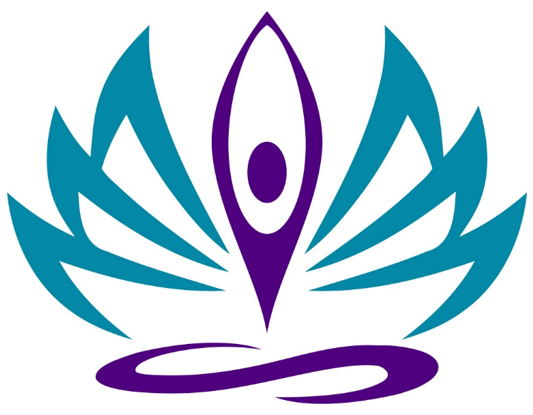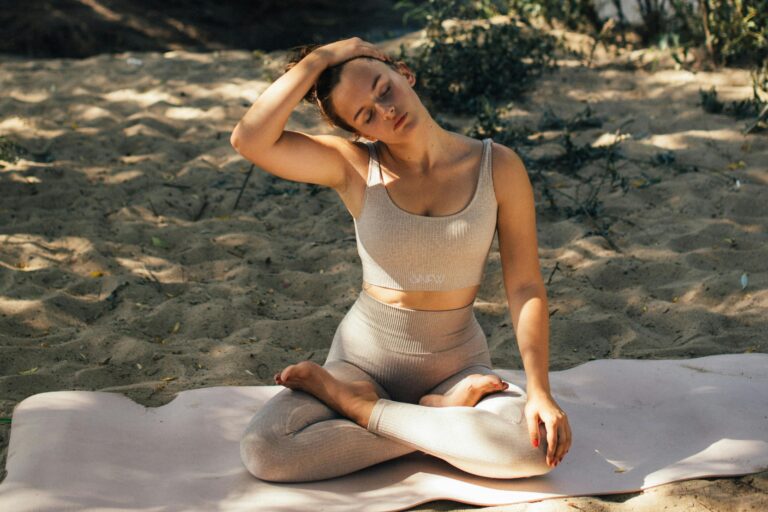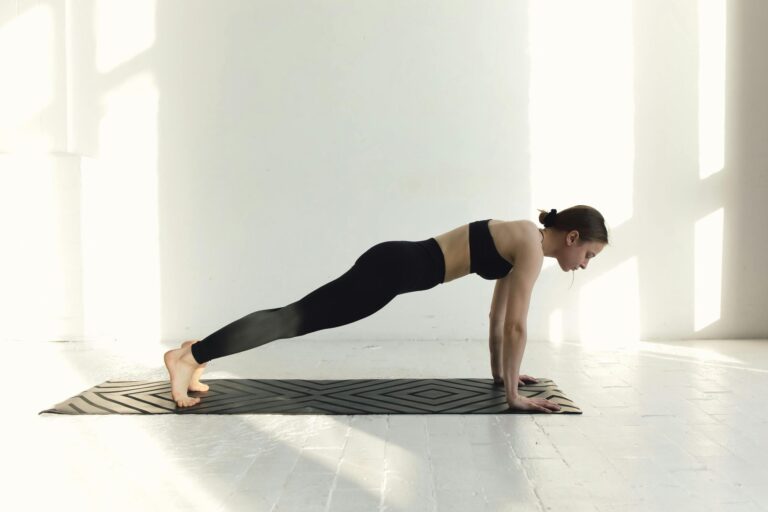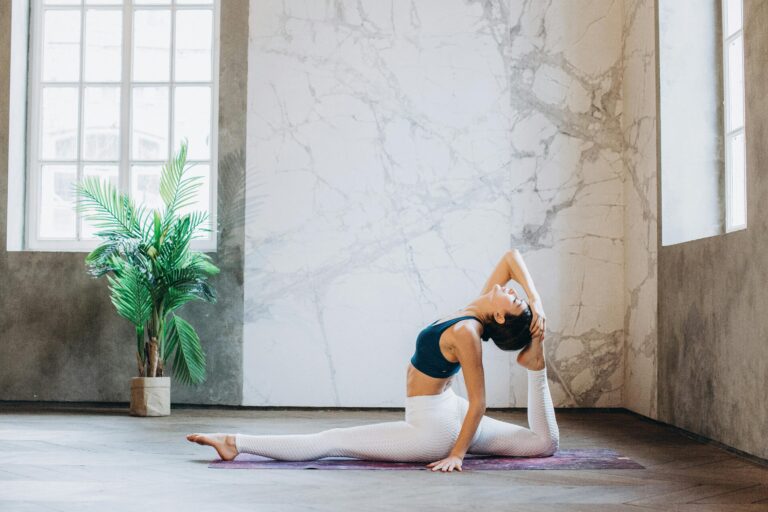Yoga to let go: 10 minutes for body and mind
Sometimes less is more. In the midst of a busy day, a short, focused yoga practice can work wonders - for your body, mind and nervous system. Especially when you are tense, feel rushed or notice that your breathing is shallow, a 10-minute practice helps you to get back into your body and release tension. In this article, you will find out why short yoga practices are so effective, how they improve your posture and why consciously letting go is more than just relaxation - it is active regeneration.
Why letting go is important - biomechanically and emotionally
Letting go doesn't just mean "doing nothing", it means specifically releasing tension that you don't need. Many people - especially those with sedentary jobs or chronic stress - show a Excessive muscle tensionespecially in the Hip flexors, lower back, neck and chest muscles. These tensions affect your posture: your breath becomes shallow, your pelvis tilts forward (hollow back), your chest tenses and your shoulders pull forward.
In the long term, this creates Poor posture and often an intensification of the natural asymmetrical movement patternss - of the Left AIC Patterns: This one-sided pelvic position, in which the left side tilts forward more and the torso turns to the right, affects the rest of the body posture, breathing and also the nervous system.
A targeted yoga practice to let go brings you back to your center, i.e. to your core:
- Functional breathing
- Better alignment
- More flexibility through less unconscious tension
10 minutes of yoga to let go - your practice
I have recorded a 10-minute yoga session for you that will help you let go of your everyday stress right away:
Alternatively, below you will find 6 exercises that consciously reduce tension, energize the body and calm the nervous system. Ideal in the morning, during a break or at the end of the day.
1. letting go with breath and voice
- Stand up straight with your knees slightly bent.
- As you inhale, raise your arms straight up and stretch.
- As you exhale through your mouth, let your upper body fall downwards - like a doll whose strings have been cut.
- Add a sound, e.g. a loud "aaaaaaah".
- Repeat this 5-6 times or as often as feels good.


Releases tension in the back, shoulders and jaw, connects the breath with movement, brings the nervous system from thinking to feeling. The sound has a regulating effect on the vagus nerve.
2. activating goddess position with rotation
- Come into a mat-wide stance, toes pointing slightly outwards.
- Bend your knees so that they are above your ankles.
- Put your arms in a cactus position (elbows at shoulder height, bent at 90 degrees).
- Turn your upper body alternately to the right and left.
- Make the movement more dynamic.


Mobilizes the thoracic spine and ribs, activates the leg muscles, boosts circulation and energy. Supports tension equalization in asymmetrical posture and rotation patterns (e.g. left AIC).
3. somatic shaking
- Stand with your feet hip-width apart and bend your knees slightly.
- Begin to bounce gently from your knees, letting your arms hang loosely.
- Increase the movement: shake your arms, legs, shoulders - as your body needs it.
- Sounds are welcome: Moaning, sighing, yawning.
- After 15-20 seconds: become still, close your eyes and feel.
Releases stored tension in the fascia and nervous system, helps you to feel, promotes self-regulation through movement. Particularly helpful for inner restlessness or overexcitement.

4. relaxed standing forward bend
- Stand hip-width apart with your legs gently bent.
- Bend forward from the pelvis with a relaxed upper body.
- Hang out, swing slightly or grab your elbows.
- Make gentle movements, stay for 5-6 breaths.
Gently stretches the back of the body, relieves the lower back and calms the autonomic nervous system. Gravity helps to release tension downwards - ideal after activation.

5. seated forward bend with flank breathing
- Sit on your mat with your knees slightly bent.
- Bend forward gently, without pressure.
- Hands rest on feet, shins or floor.
- Breathe deeply into the flanks and abdomen, lengthen the exhalation.
- Stay for 6-8 calm breaths.

Promotes diaphragmatic activity and calms the nervous system. The seated forward bend brings the focus inwards and supports straightening by consciously relaxing the back.
6. child's pose with open knees
- Sit on your heels with your knees slightly open.
- Lean your upper body forward with your forehead on a block or the mat.
- Place your arms back next to your body - palms up.
- Breathe deeply into your flanks and lower back.

Relaxes the nervous system, stretches the back muscles, activates diaphragmatic breathing. Supports the release of tension in the abdomen.
Conclusion: Feel yourself without having to perform
This short practice is an invitation to let out everything you no longer need to carry. It gives you a connection to your body, a release of stress and a noticeable straightening up - without any effort. You don't have to do anything, just breathe consciously, move and let go.
Tip: Integrate this sequence regularly into your everyday life. Your body will thank you with more ease, mobility and inner peace.







